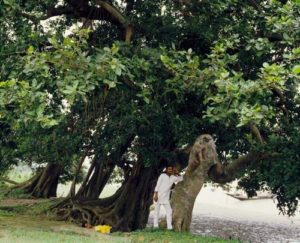
Sustainable development of agriculture cannot be reached without acknowledging the important role forests have in landscapes and in value chains.
Agroforestry systems include not only traditional but also modern land-use systems where trees are managed together with crops and/or animal production systems in agricultural settings.
Whenever trees can be kept intact rather than be cleared for the purposes of agricultural production and forest ecosystems can thrive alongside crops, the more benefits are reaped. Considering this there is a need to facilitate the integration of agriculture and forestry relevant policies, allowing them to play better, together.
However, what is needed is a forward-looking focus on research, knowledge-generation and scaling-up with development of strong partnership among many different stakeholders. This is exactly what a side event at this year’s CFS 44 entitled “Forests, trees and agroforestry for food security and nutrition and the SDGs: Research and partners, toward a joint action agenda” aimed to debate.
The event itself was organized in a partnership between a large number of different stakeholders, including the CGIAR Research Program on Forests, Trees and Agroforestry (FTA), the Food and Agriculture Organization of the United Nations (FAO), The Netherlands Government, Tropenbos International and SIANI.
A strong case has been made for scaling up agroforestry in order to address the need for more productive and sustainable use of the land while assuring livelihoods and quality nutrition for the growing world population. In fact, as stated by FAO in their presentation on agroforestry, there is a constantly growing body of scientific literature that clearly demonstrates the gains accruing from agroforestry adoption, especially in regards to the improvement of the environment and people’s lives.
Continuing to invest in research is therefore essential. As FAO outlines “the agroforestry systems are dynamic, ecologically based, natural resource management systems that diversify and sustain production in order to increase social, economic and environmental benefits for land users at all scales.”
Click here to read the full story on the CFS website, by #CFS44 Social Reporter Ksenija Simovic.
As part of the live coverage during CFS44, this post covers the Forests, trees and agroforestry for food security and nutrition and the SDGs side event.











